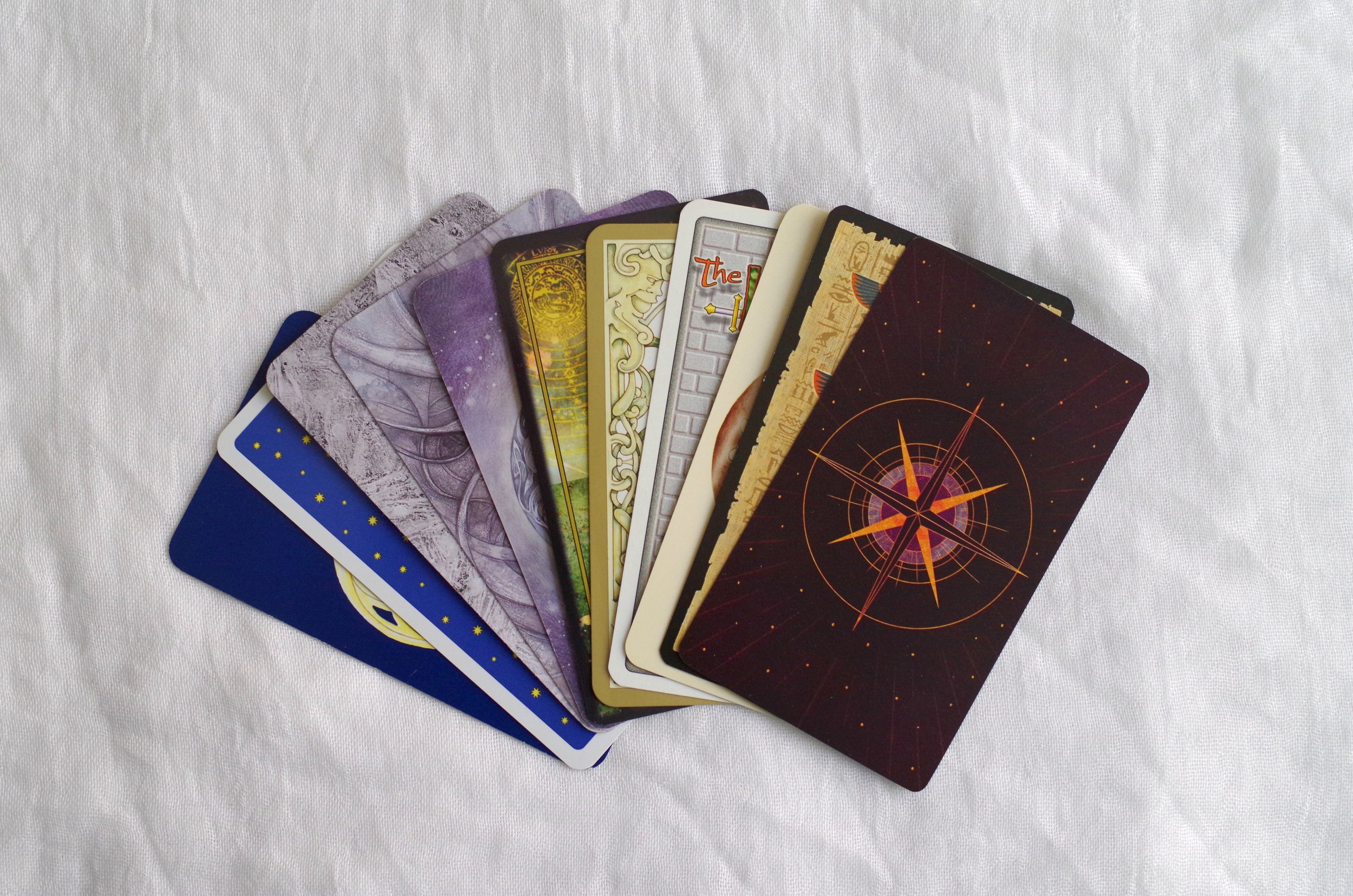A couple of months back, I was doing an in person reading for someone who said they were somewhat new to their own tarot practice, and as I walked them through what I was seeing in the cards we’d laid out, I made a note to also explain some of the “Why”, and that turned into a short explanation of the four ways I usually read reversals, which I thought I’d share here! And: major shout-out to Lynda Hardy, who gave a presentation on reversals about a decade ago, which really helped me organize my thoughts about them and understand them better, right as I was beginning to branch out and do readings for acquaintances!
I don’t always use reversals – some decks I never let the cards turn upside-down, sometimes I’ll turn the whole deck back upright before drawing, and sometimes I’ll just tell the deck not to bother because I’m going to read them all upright. When I do use them, though, the first thing I do (as an intuitive reader) is try to feel what kind of reversal it is, by sorting them into one of three broad categories: Delay, Internalized, Shadowed, and Opposite.
Delay
This kind of reversal means that the standard meaning of the card is still going to happen, but it’s going to take longer than it normally would to come about. This delay can mean that some cards that are often understood to mean something happening soon or quickly can unfold over a longer period, like Death or the Tower. In a “past” position in a spread, a delay reversal can either mean a lengthening of the past into the present, or a very long-term past pattern stretching into the more distant past. This is probably the type of reversal that changes the meaning the least.
Shadowed
Shadowed reversals change the meaning only a little bit more than the delayed type. For the shadowed meaning, the basic meaning doesn’t really change, but any negatives are emphasized and put front and center, and any positives are downplayed. Even overtly positive cards like The Sun can be dimmed by a shadowed reversal, becoming a sign of “probable success” instead of a sure thing! A lot of tarot cards are pretty neutral, but have aspects that can become negative when taken to an extreme, and that’s when I most commonly see shadowed reversals in a reading.
Internalized
An internalized reversal most often means that the conflict in the card is something the querent is feeling internally. For example, the Five of Wands is usually understood to be about conflict, disagreement, and competition – all external, normally. If internalized, that card could instead mean that someone is in disagreement with themselves, or that they’re feeling stress from what they perceive as a competition, though the other person doesn’t have a clue what’s going on. This same kind of internalization can also mean that the actions associated with the swords and the material things associated with the coins/pentacles can become more about the querent’s inner world, their mental states and emotions.
Opposite
Opposite meaning reversals are probably the best known, and they are the type most people are familiar with, and the type that you’ll most commonly find described in the booklet that comes with a deck. Positives become negatives, endings become beginnings, victories become losses, solutions become obstacles. In booklets that don’t have keywords for reversals, it can sometimes be a little challenging to come up with opposites, but its important to remember that sometimes the opposite of a neutral thing is just a very different neutral thing. For example, The Heirophant represents spiritual tradition and religious authority when upright, and the opposites of those two things might be developing new spiritual practices, and a neophyte. None of those things are inherently negative, but they’re opposites of each other. (And before anyone gets on my case about “religious authority” being negative, yeah a lot of people who claim that title are fairly problematic, but it’s not inherently negative as a concept. People who actually know the lore and the language/culture well enough to explain it to others are religious authorities as well! It’s the demand for unquestioning followers that is toxic, and that doesn’t have to be a feature of our pagan religions.)
Hopefully that helps some of you get deeper meaning out of your readings!
Reminder: All of my 12-card or 12-rune spreads, and all of the year-overview and life-overview spreads are on sale in my web shop for approx. 20% off, now through the end of January! No coupon necessary – the sale price is just listed in the shop. (And look for a flash sale on all divination at the end of December!) Make sure you’re shopping on my website, though – I have an Etsy shop as well, but the sales won’t be active there.

